Nymphing: An Experts Introduction To Nymph Fishing
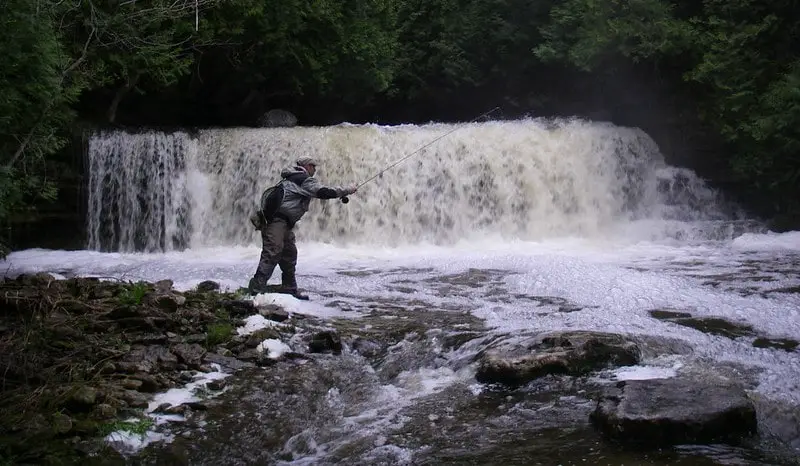
Introduction to Nymphing
Nymphing is a fly-fishing technique used to fish subsurface flies known as nymphs, and it is the most effective way to catch trout, steelhead, and salmon in a river. My specialty as a guide for the last 20 years is teaching anglers how to nymph fish better.
The art of nymphing takes skill, and some of these easy tips I’ll provide here can greatly improve your success. I guarantee you are missing fish if you are not using some of these tips.
Let us explore the best nymph fishing techniques for rivers
What Is Nymphing
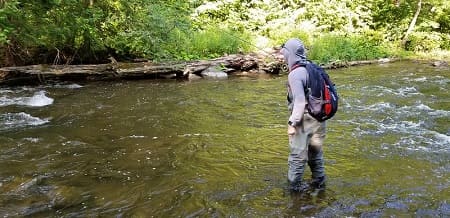
Opposite to dry fly fishing is wet fly fishing, and nymphing is wet fly fishing using a dead drift method to imitate the aquatic insects and other food sources found below the surface.
There are multiple nymphing methods fly anglers use for fishing nymphs, and some methods are far more effective than others.
Some experts will tell you that over 90% of a trout’s food source is below the surface film which is one of the reasons why using nymphs is so good for catching fish.
The Many Methods Of Nymphing
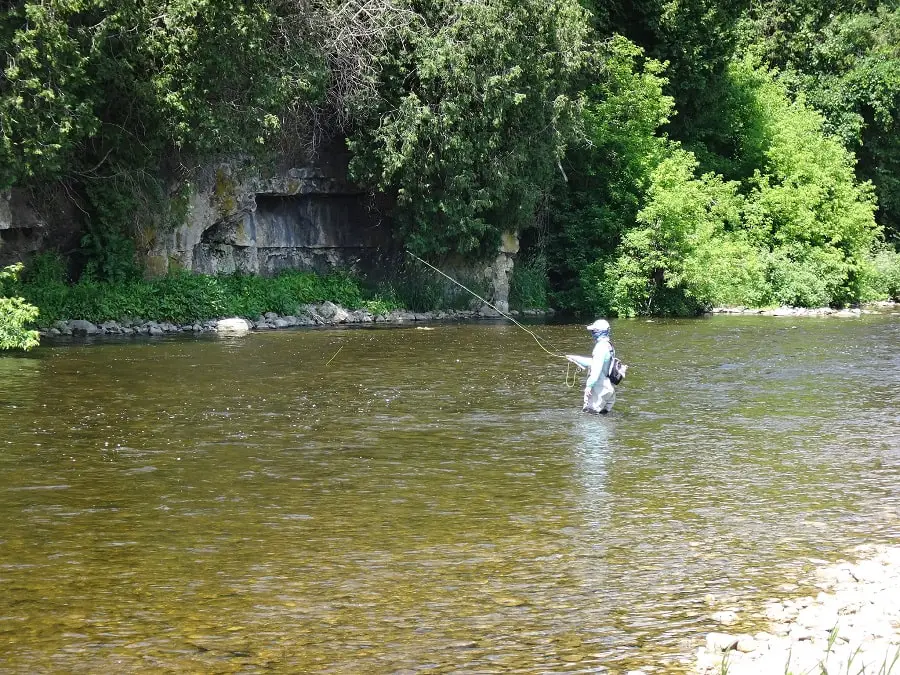
I have been teaching fly fishing with nymphs for over 20 years. In my advanced nymphing classes, I taught seven nymph fishing techniques, which include:
- Indicator Nymphing: This is still the most popular method to catch fish on a river. However, popular does not mean most effective.
- High Stick Nymphing: An old-school method used to nymph without the use of a strike indicator.
- Bottom Bouncing: This method uses a unique leader where the weights are on the bottom of the leader below the fly. It can be used with multiple nymph methods, including indicator fishing.
- Suspension Nymphing: This is very similar to indicator fishing with a slight leader adjustment and a different way of thinking.
- Polish Nymphing: Polish Nymphing was the original Euro Nymph method. It uses a short leader and a colored piece of line built into the leader called a “sighter.” It also uses multiple weighted nymphs and not additional weights on the line.
- Czech Nymphing: It is an adaptation of the Polish Nymph method and it is what made European Nymph fishing so popular.
- French Nymphing: French Nymphing is a very long leader line variation of the Czech nymph method that uses light and small flies. Also uses a sighter and a primarily upriver direction. Great in shallow rivers with very wary trout.
- Spanish Nymphing: It is very similar to the French Nymph method but uses larger flies and covers the river upriver, side river, and downriver. This is my go-to method to catch fish on most trout and steelhead rivers.
Other nymph techniques not mentioned yet are:
Dry Dropper Fishing – A dry fly nymph and dry fly combination known as the dry/dropper method. You cast and fish like you are dry fly fishing, except you have a larger dry fly above a smaller nymph. The dry flies float on the surface and act like an indicator for the nymph.
Modern Nymphing : Tight Line Nymphing – There are many variations of the Euro Nymph fishing techniques that river guides, competition fly anglers, and anglers use. Sometimes these are blends of multiple methods, and these variations are called Modern Nymphing or Tight Line Nymphing.
See my article EuroNymphing: A Complete Guide.
What Is A Nymph Fly, And What Nymphs Are Best?
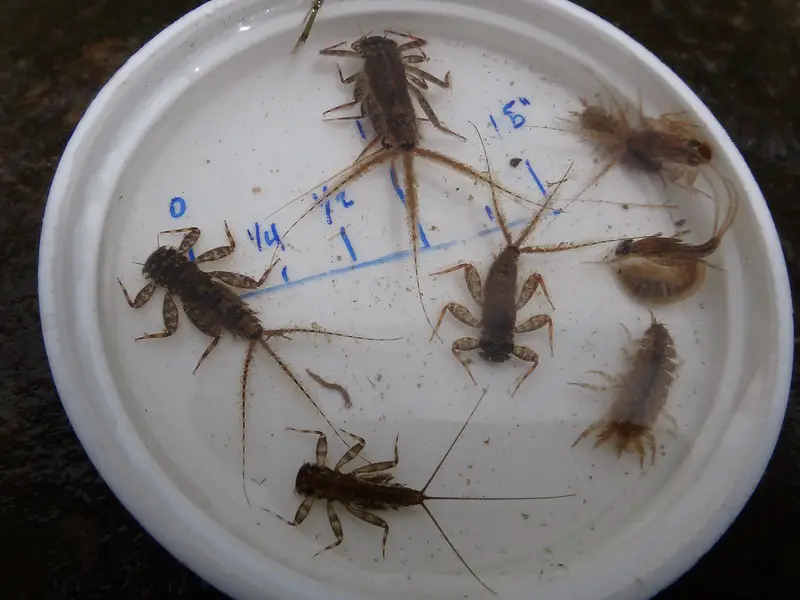
A nymph is the immature stage of aquatic insects that live in rivers and streams. Some nymphs emerge into winged adults, while other nymphs live their entire lives below the surface film. When nymph fly fishing, we also consider flies like worm flies, egg flies, terrestrials, and any bug or food source that might be drifting below the surface.
There are tons of great nymph flies that you could use when fishing nymphs.
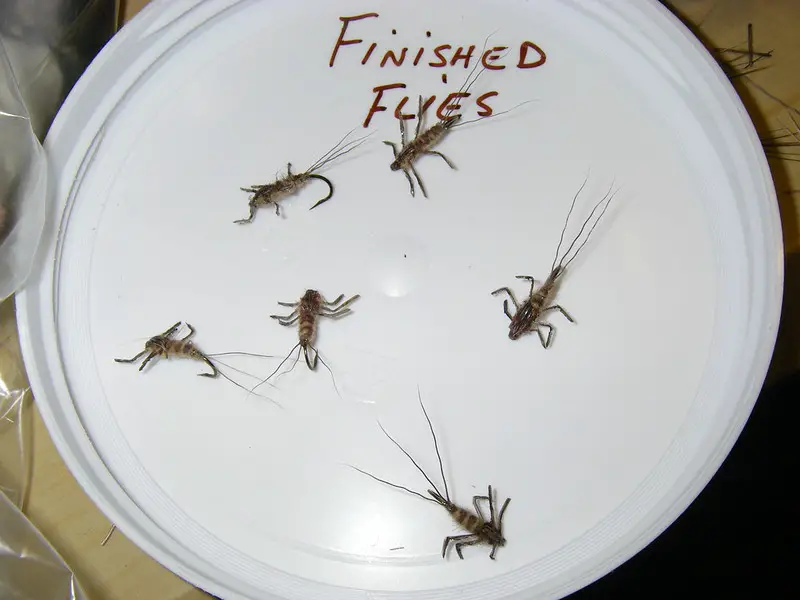
When it comes to nymphs, most of my nymph flies are weighted for using them with Suspension Indicator Nymphing and with Modern Nymphing or Euro nymphing methods.
I rarely use non-weighted flies anymore, however, there is nothing wrong with non-weighted flies as long as you know how to set them up.
Some of the best nymph flies I use and recommend are:
- Frenchie
- SOS Fly
- Polish Pheasant Tail Nymph
- Surveyor Scud
- Pheasant tail and bead-head pheasant tail nymph
- Rainbow Warrior
- Midnight Intruder fly
- San Juan Worm
- Glo Bug Egg Fly
- Hares Ear Nymph
- Walts Worm
Some of the best nymph flies, and even the best modern dry fly patterns that I have seen and used are from the Fly Fiend guy. You can check out The Fly Fiend Youtube channel.
My favorite fly patterns from The Fly Fiend are:
- Glassy Peacock Nymph
- Sexy Walts Worm
- Hot Tag Hares Ear
- The Bio Biot
- Ice Dub Pheasant tail
- D-Rib Stonefly
- Polo Club Pheasant Tail
- The Last Tag Nymph
- Flash Back Quill Baetis
- Olive Wired Soft Hackle
- Diamond Braid Biot Emerger
- Surveyor Scud
- UVP Nymph
Why Nymphing Is The Most Effective Method And The Best Approach?
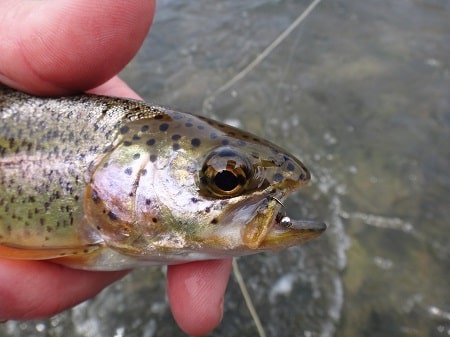
Trout spend over 90% of their feeding below the surface, which is one reason nymphing is more effective than other styles of fly fishing, and why it’s often the best approach for most river fish.
Another reason is that both small and large trout, steelhead, and even salmon will eat a well-presented nymph.
Nymph flies are also small, slow-moving, and easy targets, and with a natural drift, they can entice both neutral and active fish to bite.
Nymphing, the Art of Fly Fishing with Nymphs
If you can master the fundamentals of great nymph fishing, you will catch a lot more trout and a lot more big fish, I guarantee this. When I teach my advanced nymphing classes, these are the top five goals I want my students to master.
- Present your nymph as naturally as possible with good line control and your rod tip high.
- Get your nymph down and into the strike zone as fast as possible.
- Keep your nymph flies at the proper depth and in the strike zone for as long as possible.
- Control your nymph speed and keep your nymphs moving at the speed of the bottom current. (this is critical).
- Keep your flies off the bottom and above the fish.
- Learn to cover the water column effectively.
- Set the hook on everything.
- Learn how and where to approach the fish so you are undetected.
Master these things, and you have mastered the art of fly fishing with nymphs.
Fish Where The Fish Are: When and Where to Fish with Nymphs
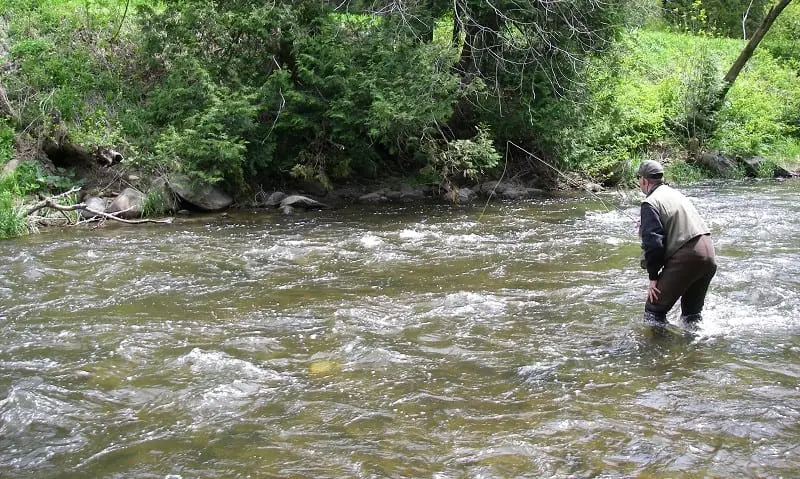
You can fish with nymphs in most slow to fast current rivers and streams. Both small streams and large rivers can be nymphed effectively with the right nymphing rig and the right nymph fishing techniques.
In rivers, the best water to nymph fish is deep pools less than eight feet deep, pockets, runs, and riffles.
Some anglers will also nymph fish in a stillwater lake, pond, or reservoir.
How do you fly fish with two nymphs?
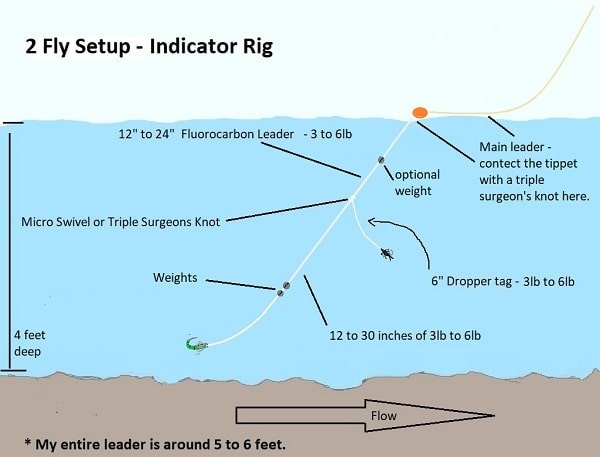
Successful nymph fishing can be done with one nymph, two nymphs, and in some cases, three nymphs.
However, when I fish myself, or when I guide experienced anglers, I always use two nymphs spread out on the nymph rig. I will spread them out between 12 and 30 inches to cover different levels of the water column.
The distance I spread them out will depend on water clarity or fish activity.
Essential Fly Fishing Gear You Need To Get Started Nymph Fishing
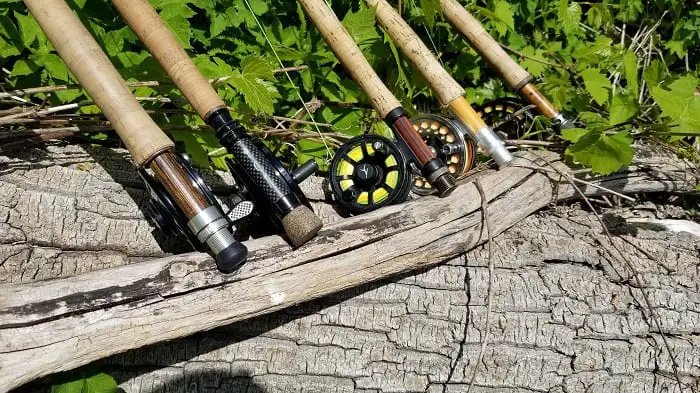
The basic gear you need to get started nymphing includes:
- Fly Rod – A high-performance rod with a softer rod tip is best.
- Fly Reel
- Fly Line – Floating fly line is best
- Tapered Leader
- Tippet
- Nymphs
Other Gear You Might Need To Nymph Fish Effectively Include:
- Waders
- Fly Fishing Pack or Fly Fishing Vest
- Multiple spools of tipper to make nymph rigs
- Tippet ring
- Fly Box with multiple nymph patterns
- Strike indicators
You can get all of this at your local fly shop or online fly shop. A good option is Trident Fly Fishing Shop or AvidMax Fly Fishing Shop.
Everything You Need to Know About Nymphing
There are a bunch of things you need to know about nymphing to ensure you catch the most fish.
The Nymphing Techniques
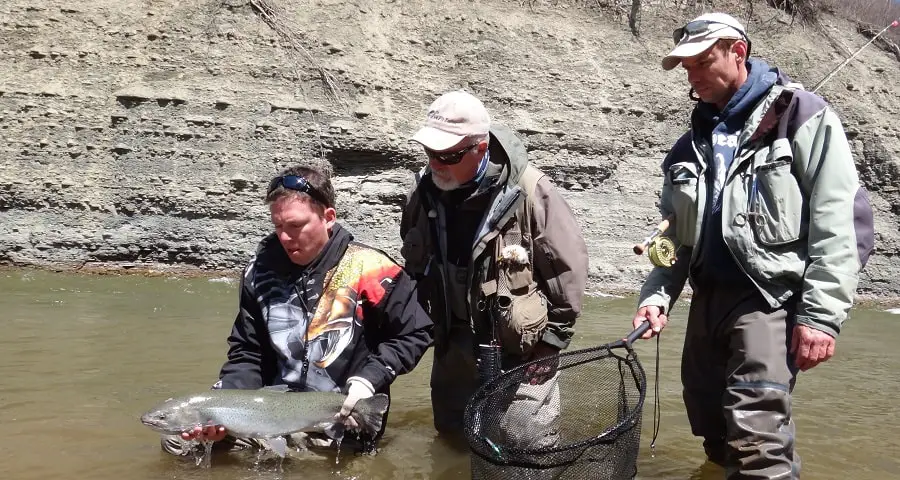
One of the first things you need to determine when you get to the spot you want to fish is which nymphing technique is best based on the conditions.
Most Euro nymph methods are superior in water under five feet deep with medium to fast flows, and in pocket water. Tight line methods also excel with short casts when fishing close.
When fishing slow water, in very deep water, fishing far away from you, or when it is really windy, indicator fishing is the best method.
Depth Control – What depth do you fish nymphs?
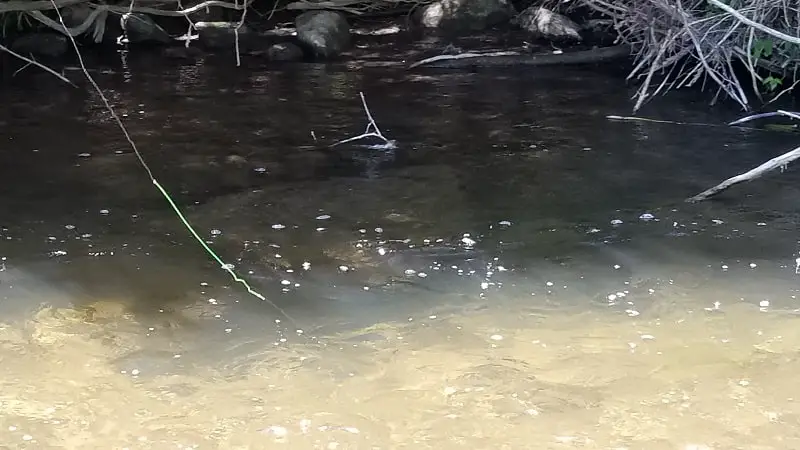
Trout spend the majority of the time within a foot of the bottom, but occasionally they will be suspended. It is imperative to ensure your nymph is close to the bottom but not dragging on the bottom.
You can adjust the indicator to suspend your nymph off the bottom, or, when Euro nymph fishing, you simply lift the sighter higher to suspend the nymph off the bottom.
Drift Control and Presentation – Reading the Drift
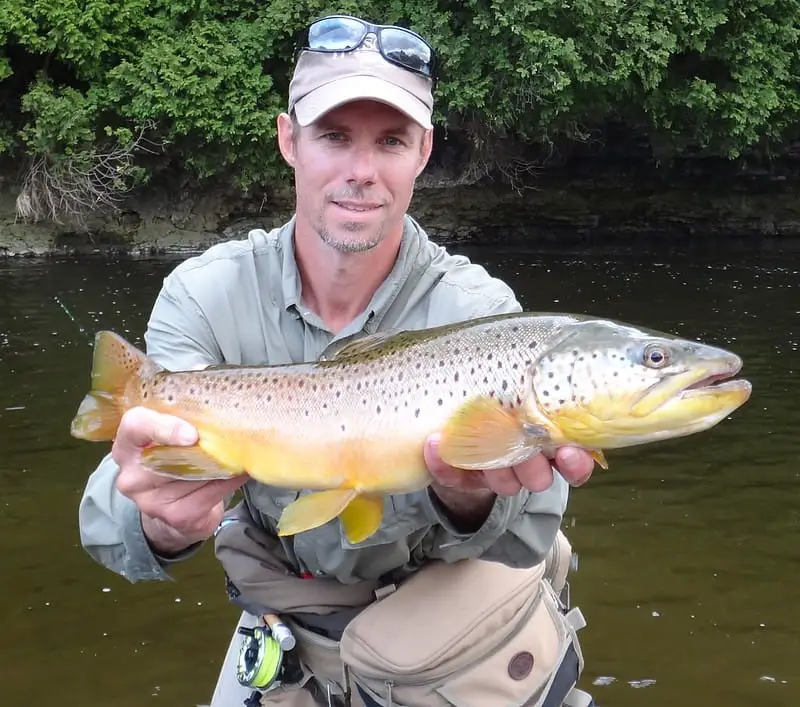
Drift control and presentation are a critical part of nymph fishing for trout, steelhead, and salmon. When you control your speed, you actually want to move your fly at the bottom current speed, which is often slower than the current speed.
This means you must be reading the drift and making sure your indicator or your sighter is moving slower than the bubbles or slower than the surface current.
Presentation involves controlling the depth and speed of your nymph simultaneously. Your goal is to keep your nymphs drifting naturally at all times.
Strike Detection And Hook Sets
When nymph fishing, you can’t see the fish bite your nymph, so, strike detection is improved by using a strike indicator or a sighter.
I teach my clients to set the hook on anything and everything, which means setting the hook if you notice your strike detection device, twitch, bounce, pull, or even hesitate.
I also stress setting the hook lightning fast and never hesitating on the hookset.
See my article on setting the hook properly and effectively for a lot more fish.
What is the difference between nymphs and wet flies?
The difference between nymphs and wet flies is how they are used. Nymphs are meant to be fished with a dead drift method, while wet flies are meant to be fished with a tight line swing method known as wet fly fishing.
What is tight line nymphing?
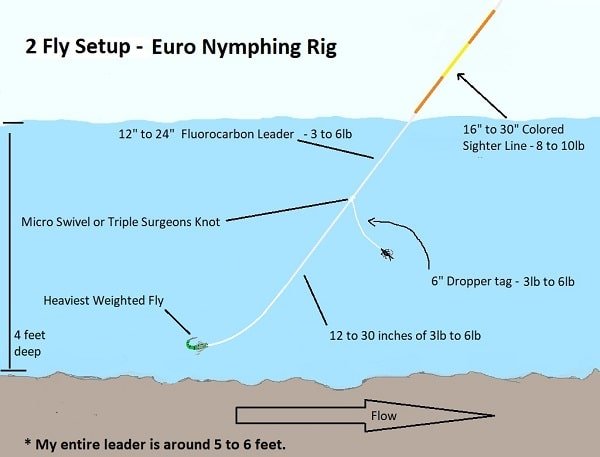
Tight line nymphing is also known as Euro Nymphing, modern nymphing, or high stick nymphing, where the leader and fly line out of the rod tip is short and is fished with controlled by light tension, preferably without pulling the nymphs.
Tight line nymph fishing is generally superior at detecting bites and can also be better for getting a drag free drift.
Perdigon Style
Perdigon style nymphs are weighted nymphs made with a tungsten bead head, and the entire body is epoxied and hard, with a feather tail. They are designed to be small but heavy so they can be cast easily on a long leader. They also sink like a rock.
What kind of leader do you use for nymphing?
You can use a tapered leader for any of the nymph fishing methods, however, most nymphing leaders are longer, thinner, and made from multiple sections of tippet material tapered down to a thin tippet.
Where do you put the split shot on a nymph rig?
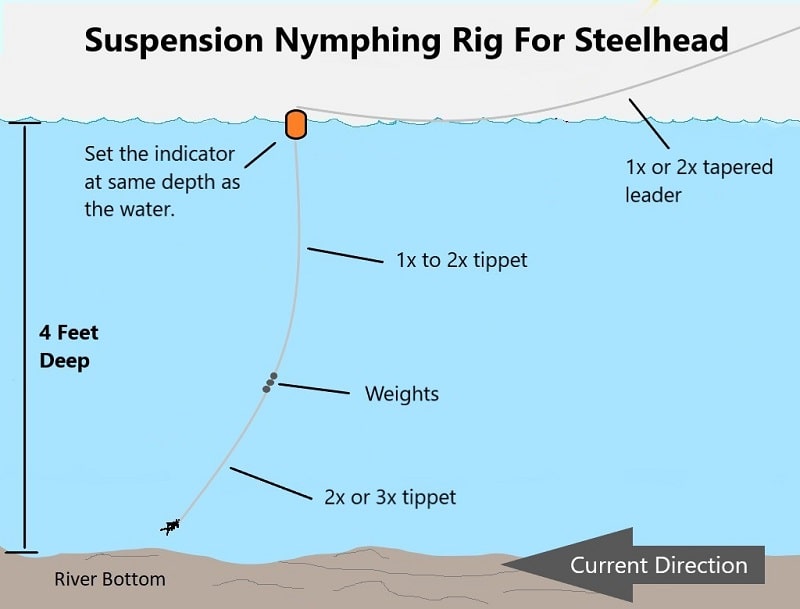
The split shot on a standard nymph rig goes about 12 to 24 inches up the leader above the nymph.
There are other nymph rigs, like the bottom bouncing nymph rig where the weight goes below the flies.
Check Out Our Series On Catching Fish With Nymphs
If you are a fly angler that wants to catch fish below the surface, you can learn more and start nymph fishing for these species by reading these in-depth articles.
Tight Lines
Graham
